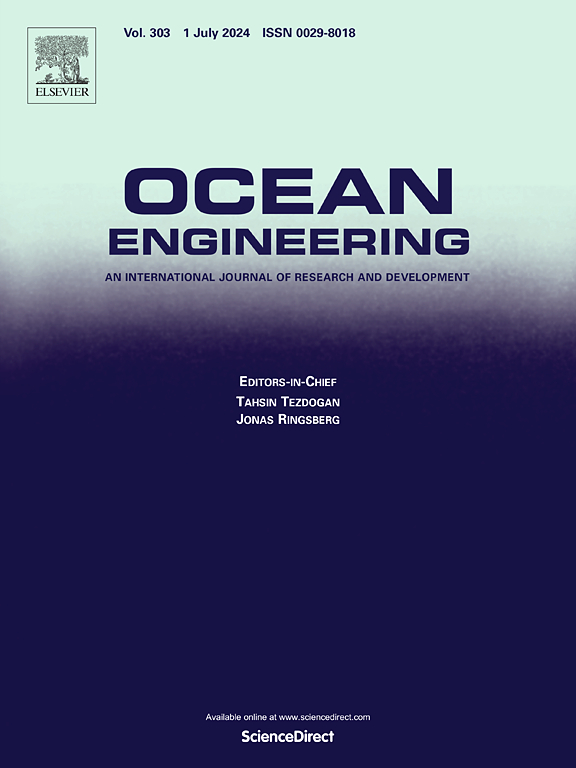AVOA-optimized CNN-BILSTM-SENet framework for hydrodynamic performance prediction of bionic pectoral fins
IF 4.6
2区 工程技术
Q1 ENGINEERING, CIVIL
引用次数: 0
Abstract
The hydrodynamic performance of bionic pectoral fins is crucial for improving Manta Ray robots' propulsion efficiency. However, traditional CFD methods are computationally expensive and inefficient. To address this, we propose AVOA-CNN-BiLSTM-SENet, a novel framework for low-cost, real-time hydrodynamic performance assessment. This framework leverages African vulture optimization algorithm (AVOA) to optimize the hyperparameters of a hybrid model that combines Convolutional Neural Networks (CNN), Bidirectional Long Short-Term Memory networks (BiLSTM), and Squeeze-and-Excitation Networks (SENet), enhancing multi-scale feature extraction and reducing overfitting. Firstly, an Optimal Latin Hypercube Design (Opt-LHD)-based experimental design is formulated, and a hydrodynamic dataset is generated via CFD simulations. Secondly, the dataset is partitioned for model training and optimization within the proposed AVOA-CNN-BiLSTM-SENet framework. For performance evaluation, the trained model is quantitatively analyzed and benchmarked against four models: support vector machine (SVM), random forest (RF), gradient boosted decision tree (GBDT), and backpropagation neural network (BPNN). Experimental results show that AVOA-CNN-BiLSTM-SENet framework outperforms all benchmarks in predicting hydrodynamic performance indicators of bionic pectoral fins, with a maximum relative error of no more than 12.4 %. Therefore, the model exhibits superior prediction accuracy and generalization capability, demonstrating strong potential for real-world hydrodynamic applications.
求助全文
约1分钟内获得全文
求助全文
来源期刊

Ocean Engineering
工程技术-工程:大洋
CiteScore
7.30
自引率
34.00%
发文量
2379
审稿时长
8.1 months
期刊介绍:
Ocean Engineering provides a medium for the publication of original research and development work in the field of ocean engineering. Ocean Engineering seeks papers in the following topics.
 求助内容:
求助内容: 应助结果提醒方式:
应助结果提醒方式:


